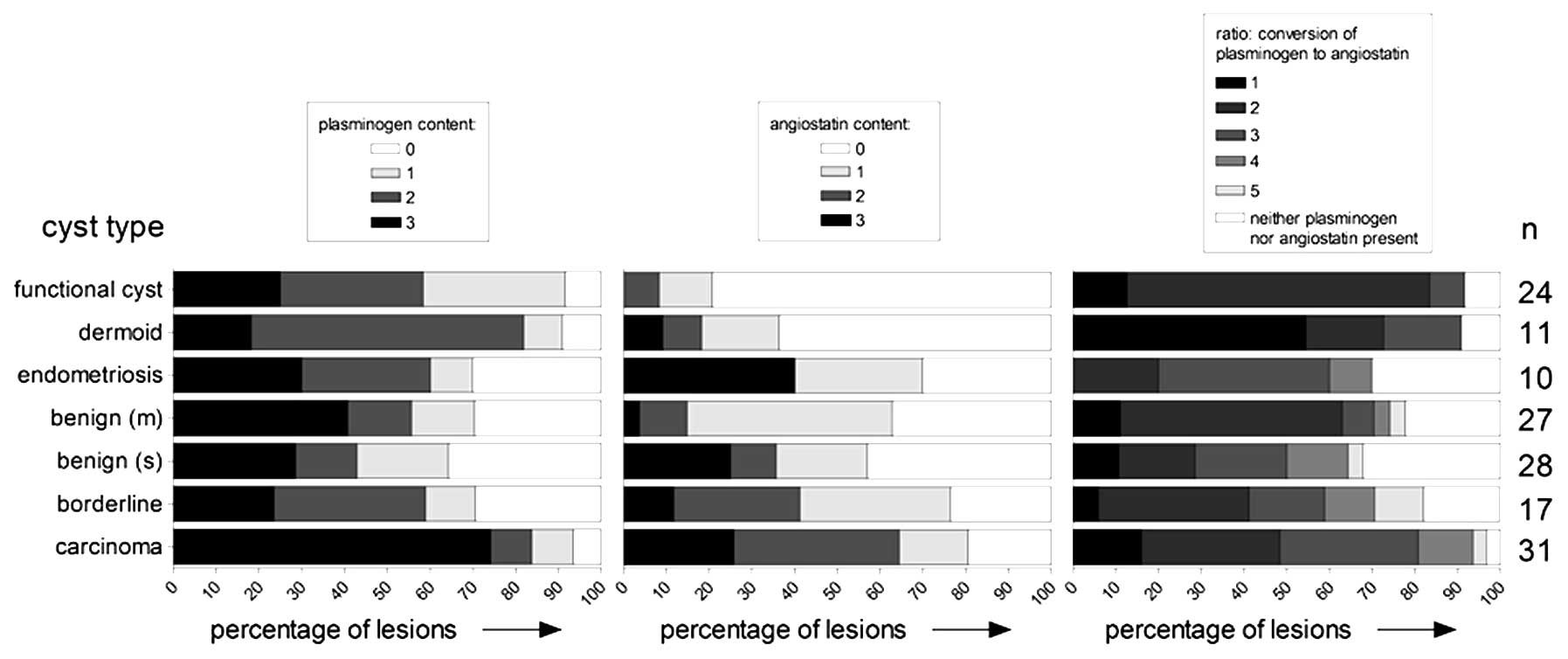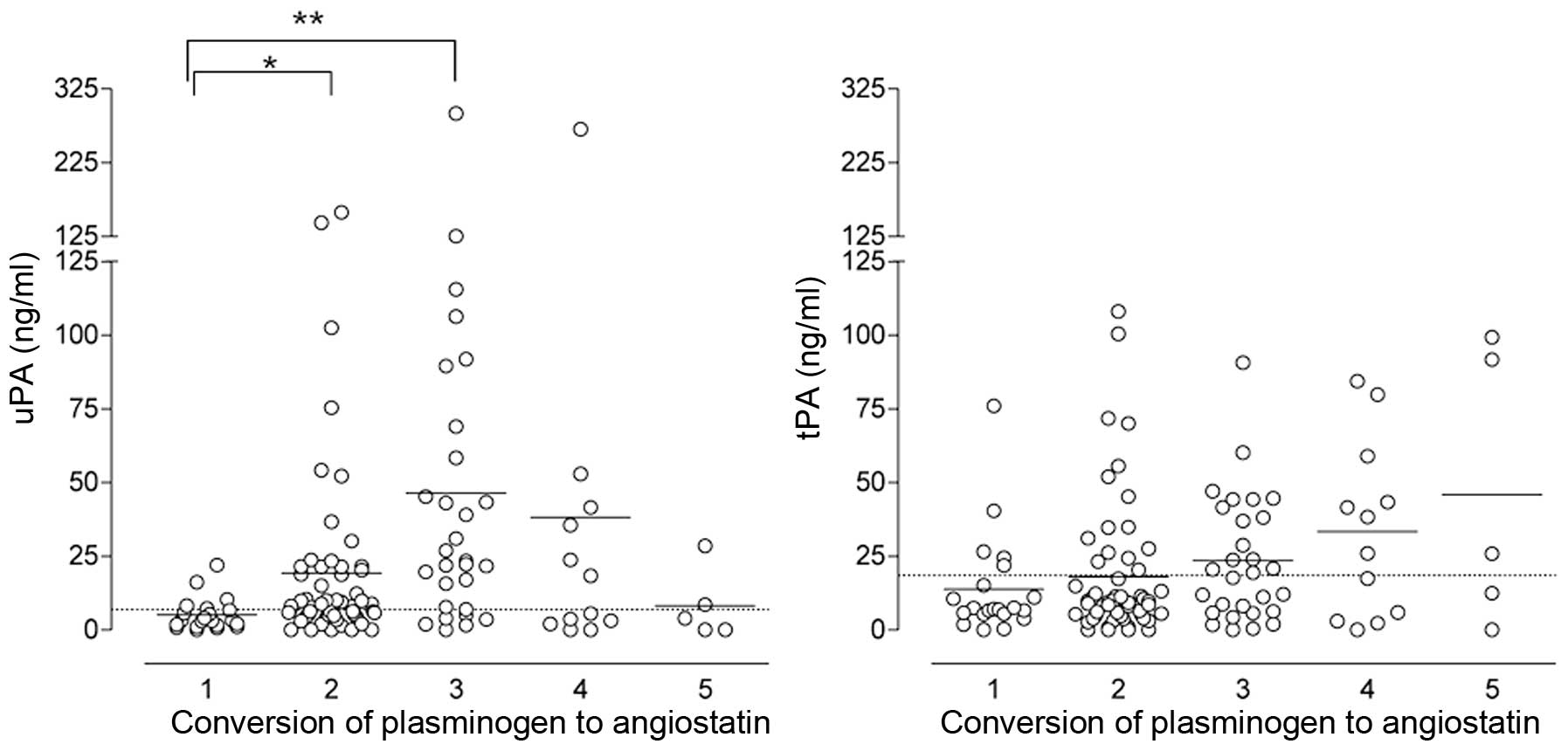|
1.
|
Folkman J: Seminars in Medicine of the
Beth Israel Hospital, Boston. Clinical applications of research on
angiogenesis. N Engl J Med. 333:1757–1763. 1995. View Article : Google Scholar : PubMed/NCBI
|
|
2.
|
Folkman J: Angiogenesis in cancer,
vascular, rheumatoid and other disease. Nat Med. 1:27–31. 1995.
View Article : Google Scholar : PubMed/NCBI
|
|
3.
|
Carmeliet P and Collen D: Molecular
analysis of blood vessel formation and disease. Am J Physiol.
273:H2091–H2104. 1997.PubMed/NCBI
|
|
4.
|
Iruela-Arispe ML and Dvorak HF:
Angiogenesis: a dynamic balance of stimulators and inhibitors.
Thromb Haemost. 78:672–677. 1997.PubMed/NCBI
|
|
5.
|
Talks KL and Harris AL: Current status of
antiangiogenic factors. Br J Haematol. 109:477–489. 2000.
View Article : Google Scholar
|
|
6.
|
Bicknell R and Harris AL: Mechanisms and
therapeutic implications of angiogenesis. Curr Opin Oncol. 8:60–65.
1996. View Article : Google Scholar : PubMed/NCBI
|
|
7.
|
Liekens S, De Clercq E and Neyts J:
Angiogenesis: regulators and clinical applications. Biochem
Pharmacol. 61:253–270. 2001. View Article : Google Scholar : PubMed/NCBI
|
|
8.
|
Hofmann UB, Westphal JR, Van Muijen GN and
Ruiter DJ: Matrix metalloproteinases in human melanoma. J Invest
Dermatol. 115:337–344. 2000. View Article : Google Scholar : PubMed/NCBI
|
|
9.
|
Pozzi A, Moberg PE, Miles LA, Wagner S,
Soloway P and Gardner HA: Elevated matrix metalloprotease and
angiostatin levels in integrin alpha 1 knockout mice cause reduced
tumor vascularization. Proc Natl Acad Sci USA. 97:2202–2207. 2000.
View Article : Google Scholar : PubMed/NCBI
|
|
10.
|
Friedlander M, Brooks PC, Shaffer RW,
Kincaid CM, Varner JA and Cheresh DA: Definition of two angiogenic
pathways by distinct alpha v integrins. Science. 270:1500–1502.
1995. View Article : Google Scholar : PubMed/NCBI
|
|
11.
|
Brooks PC, Clark RA and Cheresh DA:
Requirement of vascular integrin alpha v beta 3 for angiogenesis.
Science. 264:569–571. 1994. View Article : Google Scholar : PubMed/NCBI
|
|
12.
|
O’Reilly MS, Holmgren L, Shing Y, et al:
Angiostatin: a novel angiogenesis inhibitor that mediates the
suppression of metastases by a Lewis lung carcinoma. Cell.
79:315–328. 1994.
|
|
13.
|
O’Reilly MS, Boehm T, Shing Y, et al:
Endostatin: an endogenous inhibitor of angiogenesis and tumor
growth. Cell. 88:277–285. 1997.
|
|
14.
|
Holmgren L, O’Reilly MS and Folkman J:
Dormancy of micro-metastases: balanced proliferation and apoptosis
in the presence of angiogenesis suppression. Nat Med. 1:149–153.
1995. View Article : Google Scholar : PubMed/NCBI
|
|
15.
|
O’Reilly MS, Holmgren L, Chen C and
Folkman J: Angiostatin induces and sustains dormancy of human
primary tumors in mice. Nat Med. 2:689–692. 1996.PubMed/NCBI
|
|
16.
|
Gately S, Twardowski P, Stack MS, et al:
The mechanism of cancer-mediated conversion of plasminogen to the
angiogenesis inhibitor angiostatin. Proc Natl Acad Sci USA.
94:10868–10872. 1997. View Article : Google Scholar : PubMed/NCBI
|
|
17.
|
Westphal JR, Van’t Hullenaar R,
Geurts-Moespot A, et al: Angiostatin generation by human tumor cell
lines: involvement of plasminogen activators. Int J Cancer.
86:760–767. 2000. View Article : Google Scholar : PubMed/NCBI
|
|
18.
|
Cornelius LA, Nehring LC, Harding E, et
al: Matrix metalloproteinases generate angiostatin: effects on
neovascularization. J Immunol. 161:6845–6852. 1998.PubMed/NCBI
|
|
19.
|
Dong Z, Kumar R, Yang X and Fidler IJ:
Macrophage-derived metalloelastase is responsible for the
generation of angiostatin in Lewis lung carcinoma. Cell.
88:801–810. 1997. View Article : Google Scholar : PubMed/NCBI
|
|
20.
|
Heidtmann HH, Nettelbeck DM, Mingels A,
Jager R, Welker HG and Kontermann RE: Generation of
angiostatin-like fragments from plasminogen by prostate-specific
antigen. Br J Cancer. 81:1269–1273. 1999. View Article : Google Scholar : PubMed/NCBI
|
|
21.
|
Puzer L, Barros NM, Paschoalin T, et al:
Cathepsin V, but not cathepsins L, B and K, may release
angiostatin-like fragments from plasminogen. Biol Chem.
389:195–200. 2008. View Article : Google Scholar : PubMed/NCBI
|
|
22.
|
Soff GA: Angiostatin and
angiostatin-related proteins. Cancer Metastasis Rev. 19:97–107.
2000. View Article : Google Scholar : PubMed/NCBI
|
|
23.
|
Rotenberg RG, Rozas NS, Guerri L, et al:
Elevated levels of angiostatin in effusions from patients with
malignant disease. Oncol Rep. 11:523–528. 2004.PubMed/NCBI
|
|
24.
|
Grebenschikov N, Geurts-Moespot A, De
Witte H, et al: A sensitive and robust assay for urokinase and
tissue-type plasminogen activators (uPA and tPA) and their
inhibitor type I (PAI-1) in breast tumor cytosols. Int J Biol
Markers. 12:6–14. 1997.PubMed/NCBI
|
|
25.
|
Span PN, Grebenchtchikov N, Geurts-Moespot
J, Westphal JR, Lucassen AM and Sweep CG: EORTC Receptor and
Biomarker Study Group Report: a sandwich enzyme-linked
immunosorbent assay for vascular endothelial growth factor in blood
and tumor tissue extracts. Int J Biol Markers. 15:184–191.
2000.
|
|
26.
|
Murthi P, Barker G, Nowell CJ, et al:
Plasminogen fragmentation and increased production of extracellular
matrix-degrading proteinases are associated with serous epithelial
ovarian cancer progression. Gynecol Oncol. 92:80–88. 2004.
View Article : Google Scholar
|
|
27.
|
Drenberg CD, Saunders BO, Wilbanks GD, et
al: Urinary angiostatin levels are elevated in patients with
epithelial ovarian cancer. Gynecol Oncol. 117:117–124. 2010.
View Article : Google Scholar : PubMed/NCBI
|
|
28.
|
de Witte JH, Sweep CG, Klijn JG, et al:
Prognostic value of tissue-type plasminogen activator (tPA) and its
complex with the type-1 inhibitor (PAI-1) in breast cancer. Br J
Cancer. 80:286–294. 1999.PubMed/NCBI
|
|
29.
|
de Witte JH, Sweep CG, Klijn JG, et al:
Prognostic impact of urokinase-type plasminogen activator (uPA) and
its inhibitor (PAI-1) in cytosols and pellet extracts derived from
892 breast cancer patients. Br J Cancer. 79:1190–1198.
1999.PubMed/NCBI
|
|
30.
|
Look MP, van Putten WL, Duffy MJ, et al:
Pooled analysis of prognostic impact of urokinase-type plasminogen
activator and its inhibitor PAI-1 in 8377 breast cancer patients. J
Natl Cancer Inst. 94:116–128. 2002. View Article : Google Scholar : PubMed/NCBI
|
|
31.
|
Manders P, Tjan-Heijnen VC, Span PN, et
al: Predictive impact of urokinase-type plasminogen activator:
plasminogen activator inhibitor type-1 complex on the efficacy of
adjuvant systemic therapy in primary breast cancer. Cancer Res.
64:659–664. 2004. View Article : Google Scholar
|
|
32.
|
Manders P, Tjan-Heijnen VC, Span PN, et
al: The complex between urokinase-type plasminogen activator (uPA)
and its type-1 inhibitor (PAI-I) independently predicts response to
first-line endocrine therapy in advanced breast cancer. Thromb
Haemost. 91:514–521. 2004.
|
|
33.
|
de Groot-Besseling RR, Ruers TJ,
Lamers-Elemans IL, Maass CN, de Waal RM and Westphal JR:
Angiostatin generating capacity and anti-tumour effects of
D-penicillamine and plasminogen activators. BMC Cancer.
6:1492006.PubMed/NCBI
|
|
34.
|
de Groot-Besseling RR, Ruers TJ, van
Kraats AA, et al: Anti-tumor activity of a combination of
plasminogen activator and captopril in a human melanoma xenograft
model. Int J Cancer. 112:329–334. 2004.
|














